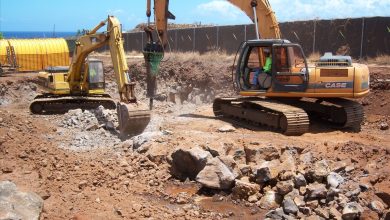Top 3 Materials for Bridge Abutments

With advancements in imaging technology, scientists, engineers, and government inspectors know more than ever before about the effect that aging has on bridge abutments. This knowledge can be applied when planning future builds to ensure that only the best, safest materials and construction methods are used. A little foresight can prevent costly damages and delays down the road.
But what are the best kinds of bridge abutments? It’s hard to answer without taking a closer look at what, exactly, They are:
What are Abutments?
Bridge parts are broken up into several components.
The first is the superstructure. This is the tall part of the bridge. It’s what you see when you’re driving up to it. The familiar red part of the Golden Gate bridge is a memorable example of a superstructure.
The next are the decks. This is the technical term for the part that either the road or the railroad tracks are on. Think of it as being at the surface level.
The last, and the part that concerns us today, is the substructure. This is the part of the bridge that sits below the decks, helping to distribute the force from the structure into the surrounding land.
Abutments are a critical part of this component. Some might say they are the most important part. They are structures, often made of concrete, which support the end of the bridge as well as help maintain the integrity of embankments on either side. More on different construction materials, below.
For more detailed information, check here: https://theconstructor.org/structures/components-of-bridges-concrete-steel/17806/ for a little civic engineering 101.
What Aren’t Abutments?
There are a few other construction elements that are a part of the substructure, which can cause confusion.
The first of these is a pier. A pier is a structure constructed between abutments in order to help transfer the weight of the bridge from the surface to the sub-soil beneath. Sides of a v-pier join together at the pier column and are set into the sub-soil at the pier shaft level.
Another piece of the substructure is a column. Like the pier, this part of a bridge is used to help transfer the weight of the superstructure to edifices below.
All these parts of the substructure work together in order to support the other elements of the bridge. But what makes the best substructure?
Top 3 Materials
Number one is brick. Although an uncommon material in modern engineering, at one time brick was a very popular component of bridge abutments. Some bridges made with bricks have lasted for thousands of years.
Although they can be durable, there are a number of drawbacks to using bricks as a material. It requires extensive planning and can be costly in time and materials to construct. It is also prone to many different means of decay. Many bridges with these abutments face problems of cracking and scaling. In addition, when grout deteriorates it can cause major issues.
Next is concrete. This is a very popular material today. In fact, many people usually think of concrete bridge abutments as the only type there is. It is a traditional material, but there can be some risks associated with it. It is prone to several types of damage that the Federal Highway Administration looks for during its inspections.
Cracking is a common concern. It can be due to a number of reasons. As temperatures change, the volume of the concrete changes. It contracts or expands, depending on whether the ambient temperature is hot or cold.
Scaling is another issue. It is due to a loss of surface mortar. Inspectors look first for evidence of it at the waterline, but it can be found anywhere water freezes and thaws on the structure.
Finally, the third type is steel. Steel is stronger than the other two types of materials and is less prone to damage. The only major issue present in steel abutments is corrosion. If unprotected steel is exposed to water, especially saltwater, the two chemicals can react and start to eat away at the integrity of the material. This is why many builders today choose to coat steel with a protective layer to prevent corrosion.
You’ll notice that I haven’t included timber as one of the top three materials. That is because timber is a relatively weak material in comparison with the other ones presented above. More here. Timber tends to decay. It is susceptible to marine infestation, which can conceal other issues from inspectors, making it hard to determine whether it is up to code. It also erodes from the constant contact with water.
There are many different things to consider when seeking the best material for bridge abutments. Choosing the right one can make a long-term impact on overall safety. The best material is the one that will maintain structural integrity for years to come.





